
Issue 083
December 2011
From arm drags to extreme wheelbarrows, a plethora of daily drills to work your full mixed martial arts game
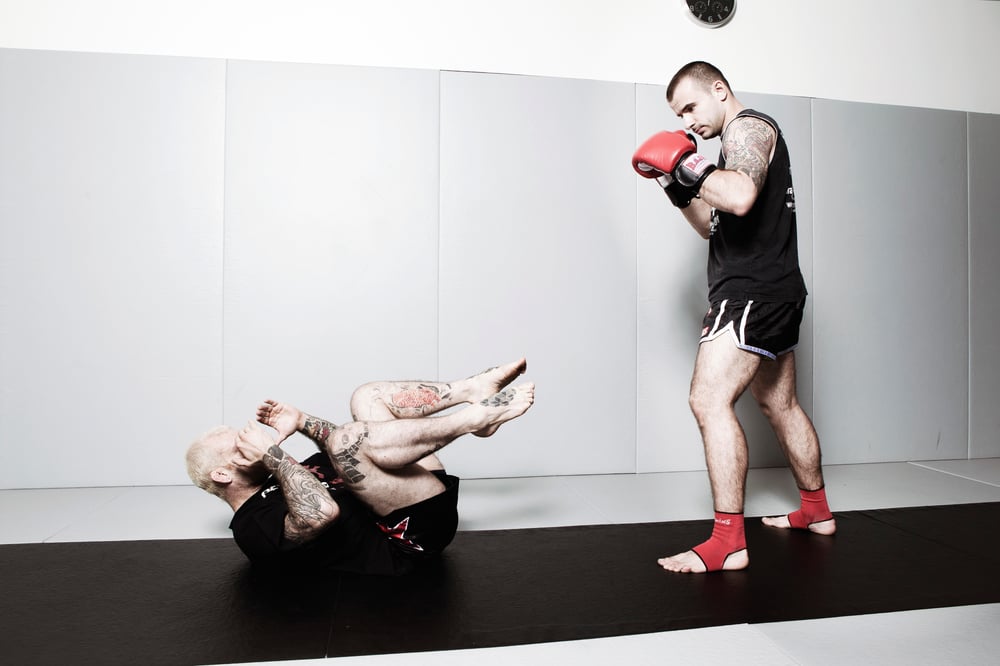
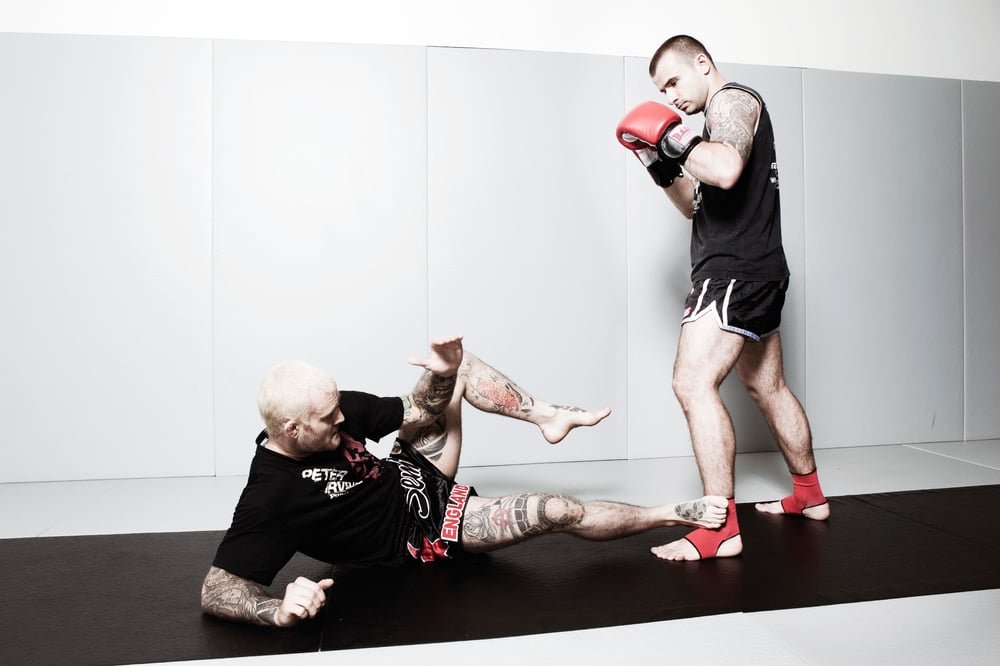
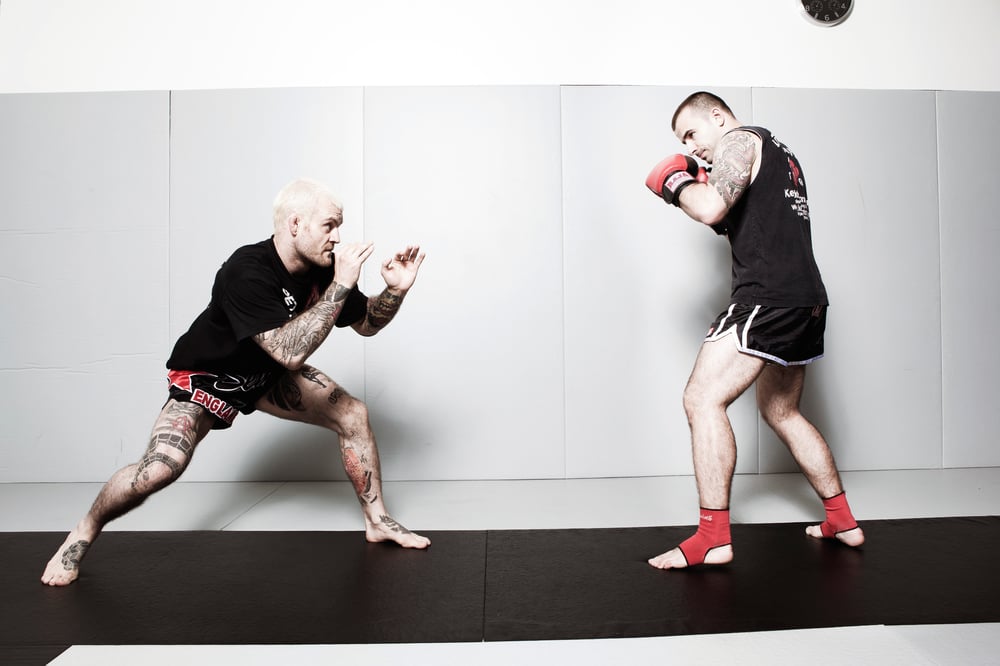
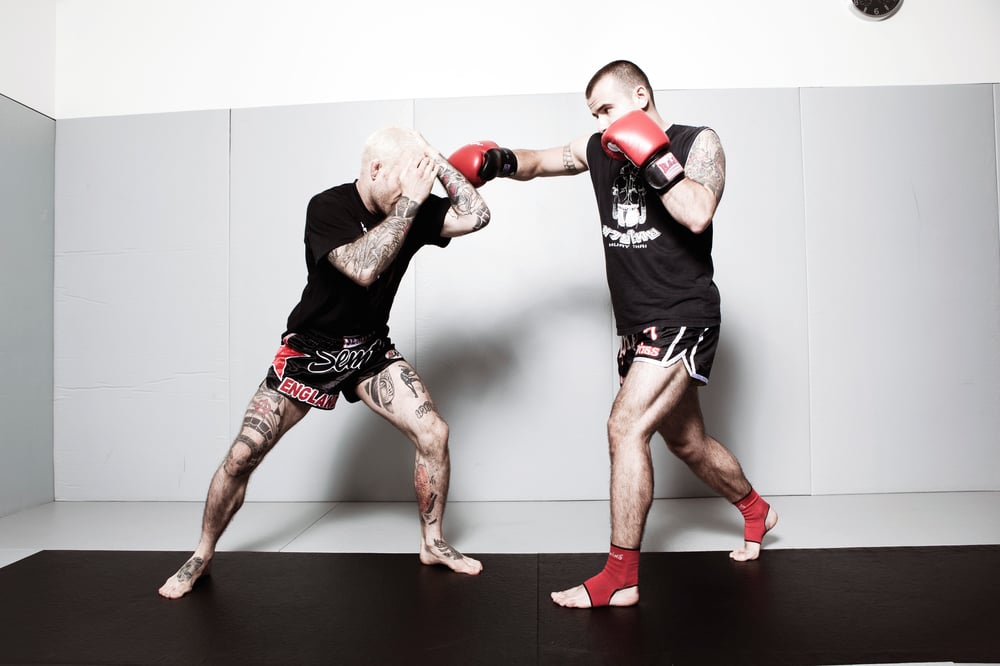
TECHNICAL STAND-UP ORIGIN: BRAZILIAN JIU-JITSU
Player one begins on his back, player two stands in front wearing heavy sparring gloves (14 or 16oz). Player one halts player two’s advance by jamming his lead ankle with his foot, and executes the technical stand-up movement: placing his foot close to his butt and boosting his hips back to the standing position. The aim is to execute the movement as efficiently as possible, eradicating any extra movements to go directly from one fighting position (the guard) to another (the stand-up stance) as swiftly as possible. Player two should rush player one as soon as his foot leaves contact with the ankle, and attempt to catch him with a punch. If the technical stand-up has been correctly executed player one should be in his stance ready to block and take the punch.
SKILLS DEVELOPED
Scrambling
Efficiency of motion
Foot speed
Stance
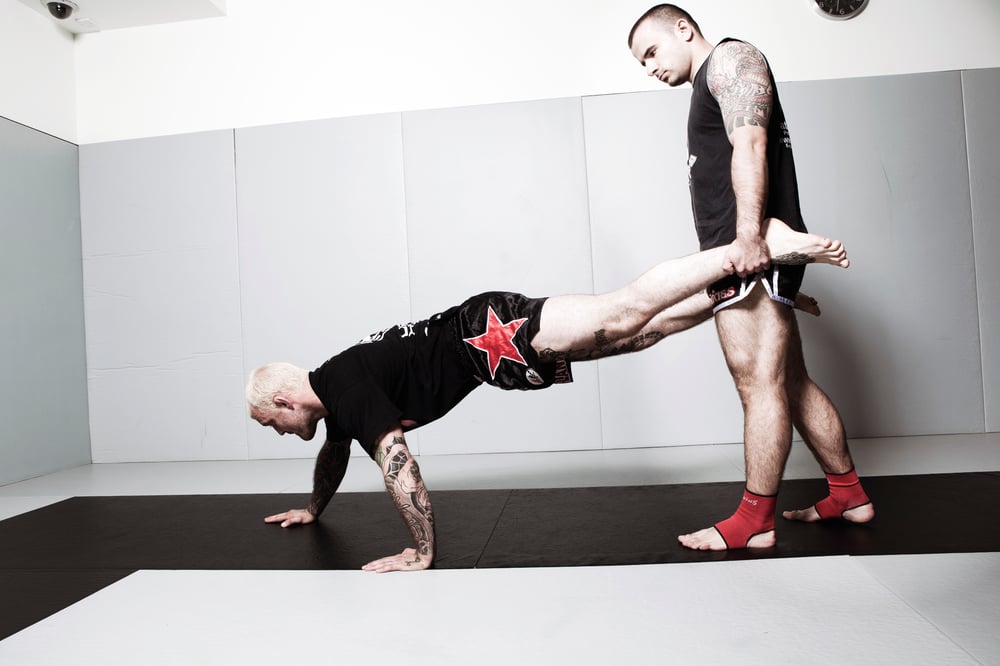
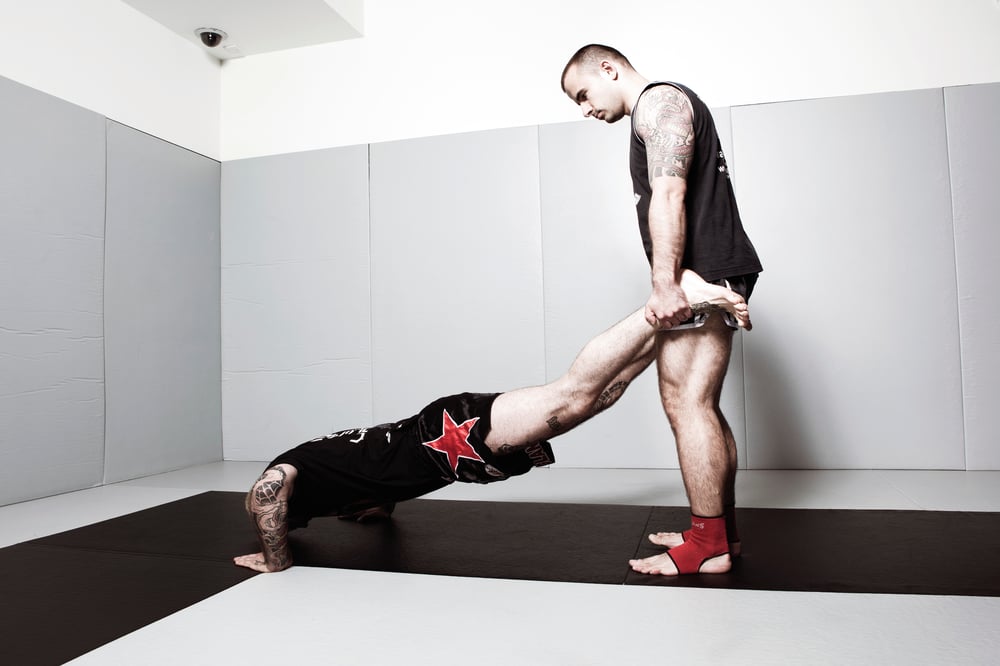
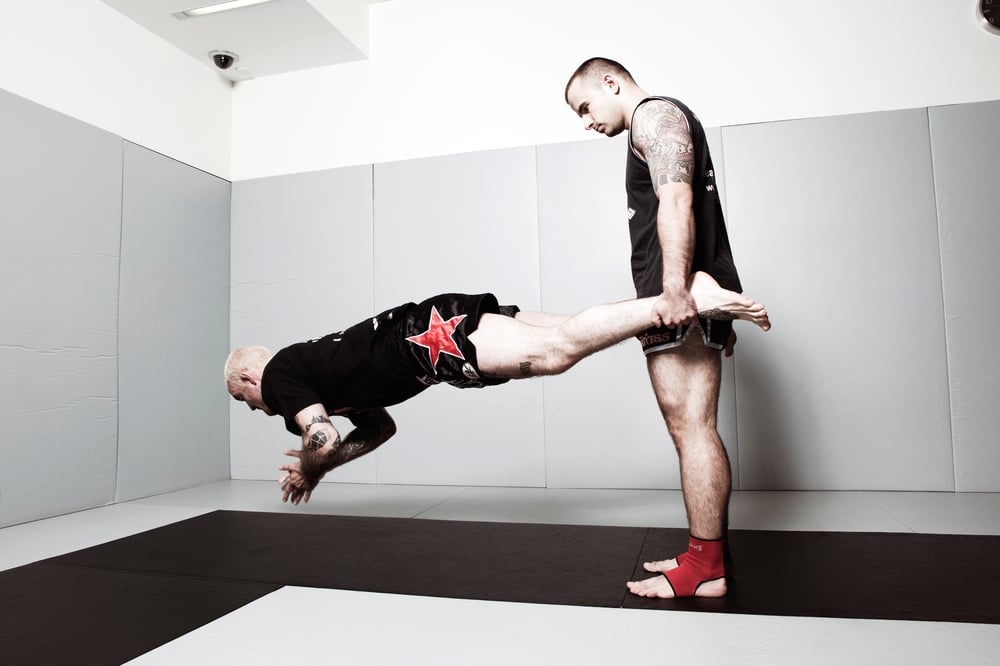
WHEELBARROW ORIGIN: WRESTLING/BRAZILIAN JIU-JITSU
The wheelbarrow can be included as part of the warm-up, as a line drill, or as part of a strength and conditioning workout. Player one holds player two by the ankles as player one walks forward on his hands. Take four steps forward then do four push-ups. Upon reaching the end of the mat, exchange places and return to the start position. Adjust distance and repetition as necessary to maintain form. It’s critical to maintain good posture throughout – no piking or sagging. Therefore it is best to avoid doing wheelbarrow walks to failure, as sagging becomes inevitable and causes excessive lower-back strain.
SKILLS DEVELOPED
Muscular endurance
Posture
PROGRESSION: If you feel comfortable using standard push-ups you can try developing the exercise by using clap push-ups instead.
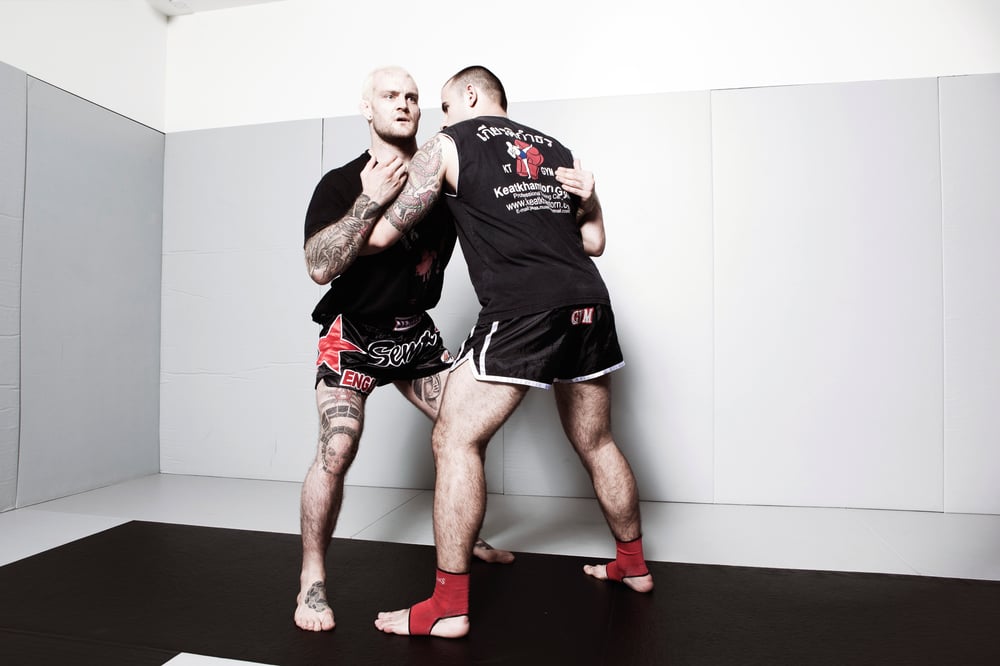
PUMMELING ORIGIN: GRECO-ROMAN WRESTLING
Starting from a 50/50 tie-up where you have an overhook and an underhook on your partner, both players simultaneously trade overhooks for underhooks in a co-operative effort, establishing a rhythm. It is important to simply create space to trade the tie-ups without twisting the upper body. Just move your head out slightly and place it on the overhook side each time you trade.
Once you have established a rhythm, the coach can call for speed (trade the overhooks and underhooks as fast as possible), power (drive your underhook in hard against resistance and butt chests to condition yourself for live wrestling and test your stance), motion (move your feet, circling round, pushing and pulling or driving in your penetration step). Try 30-second bursts of each, then return to the static rhythm. Once you have mastered these, try combinations: speed and power, power and motion etc.
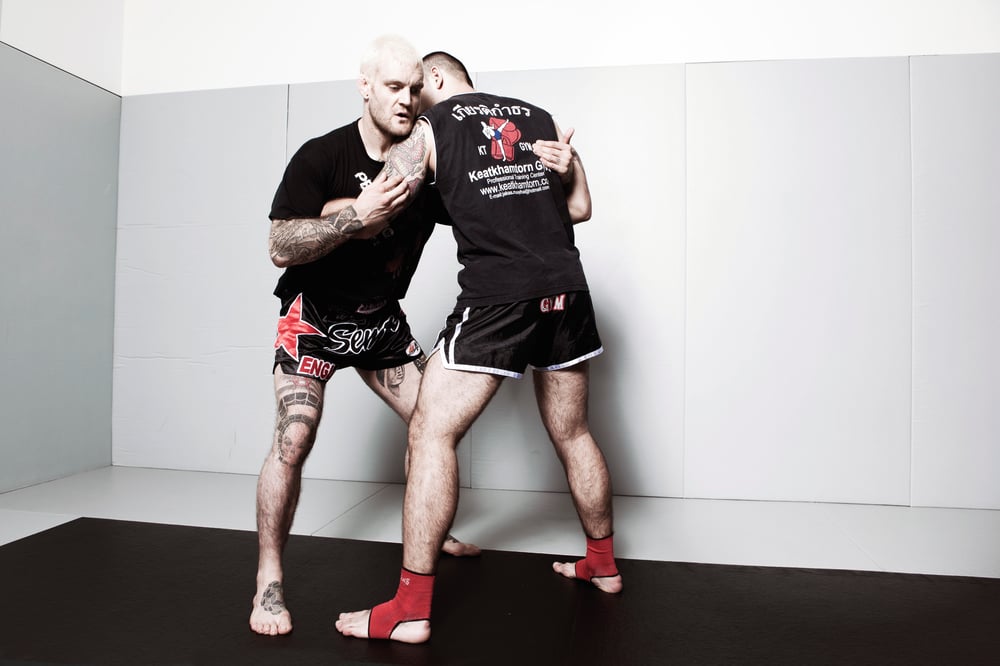

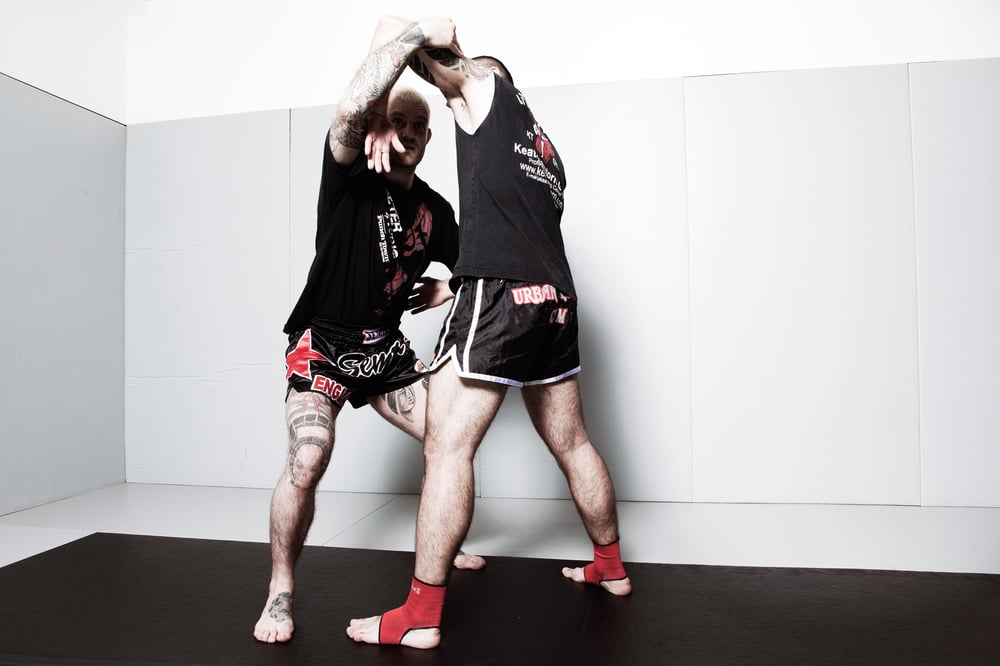
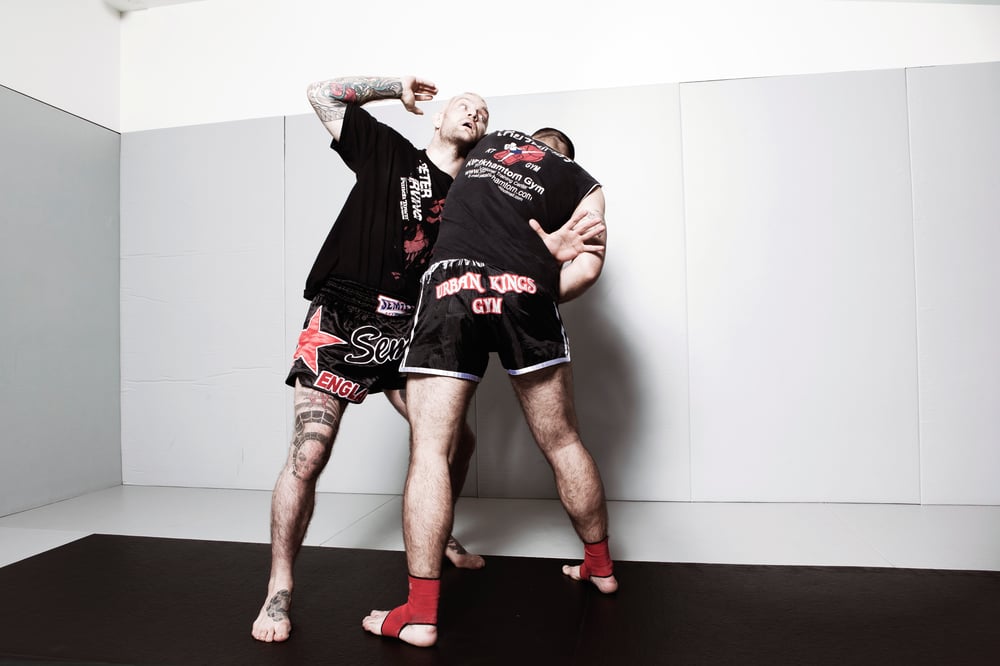
VARIATION: DUCK UNDER FROM PUMMELING
As you pummel, start to look for the window under your opponent’s armpit, by guiding his elbow up with the palm of your hand as he pummels in his underhook. Pummel once, twice, three times, then on the fourth raise the elbow and level change. Be sure not to put your head in front of your body, but rather allow your partner to fall over you as the resistance from butting chests disappears with the level change.
SKILLS DEVELOPED
Clinch sensitivity
Clinch endurance
Stance
Balance
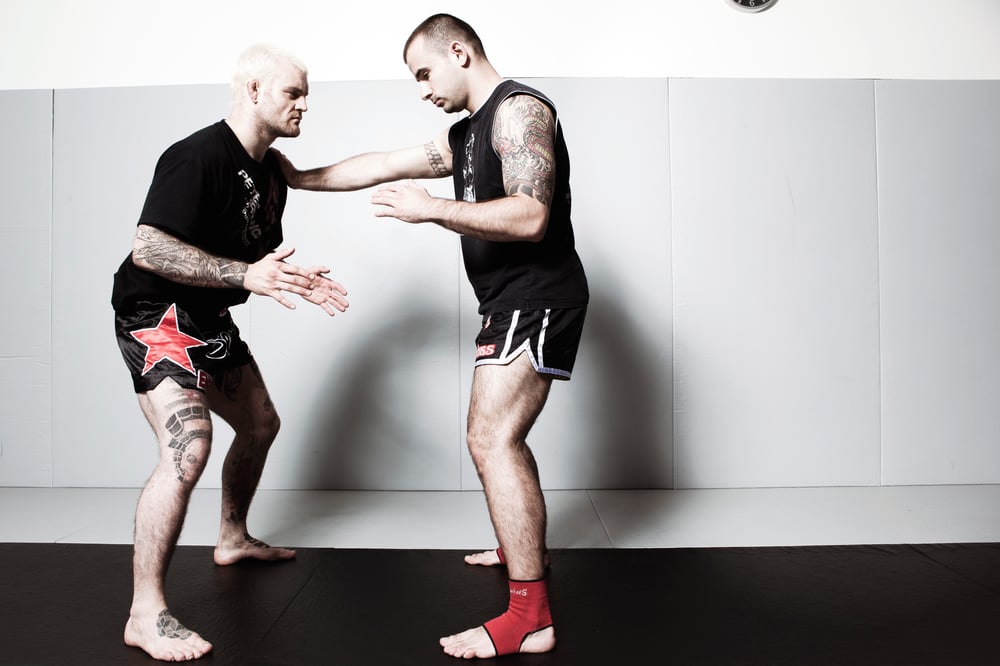
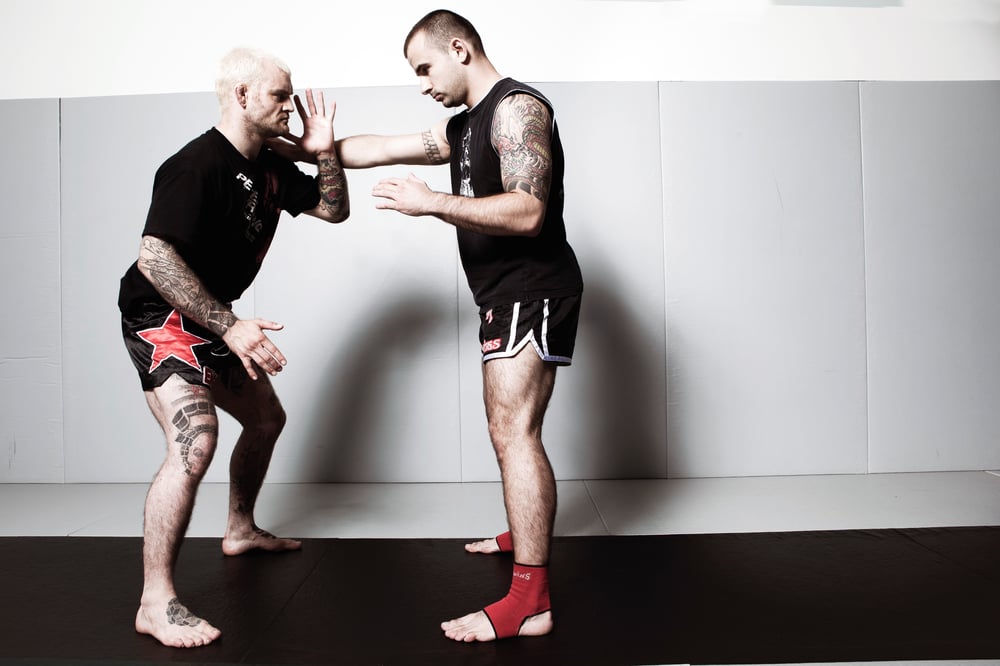
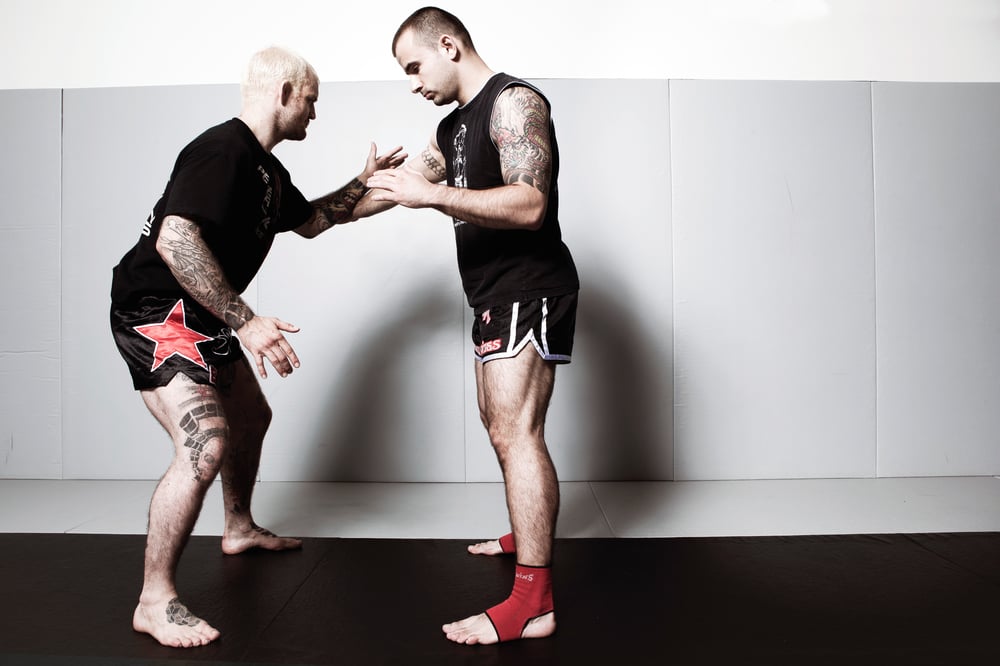
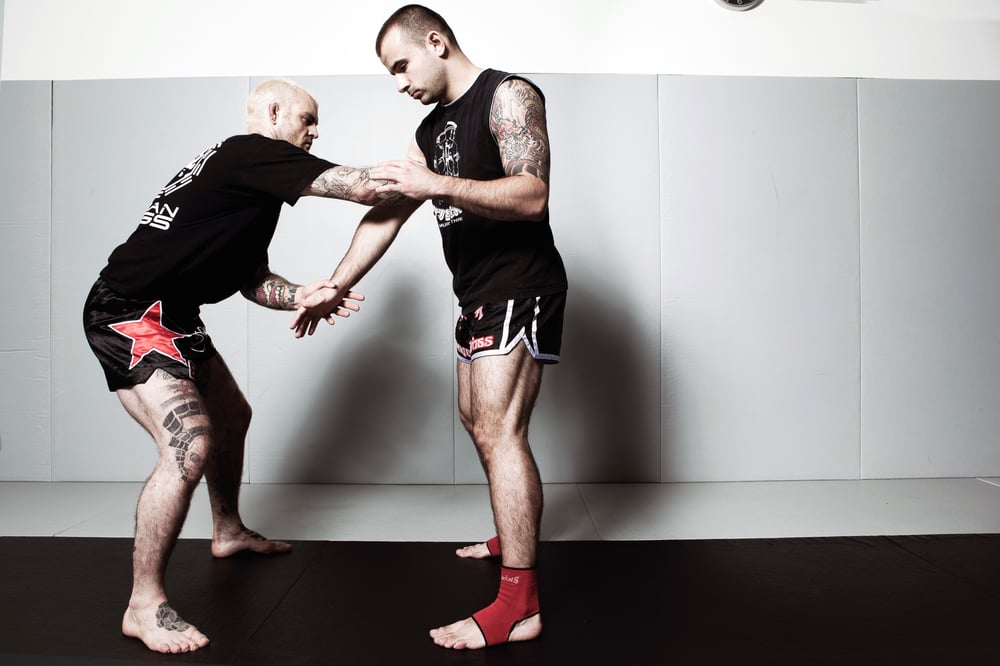
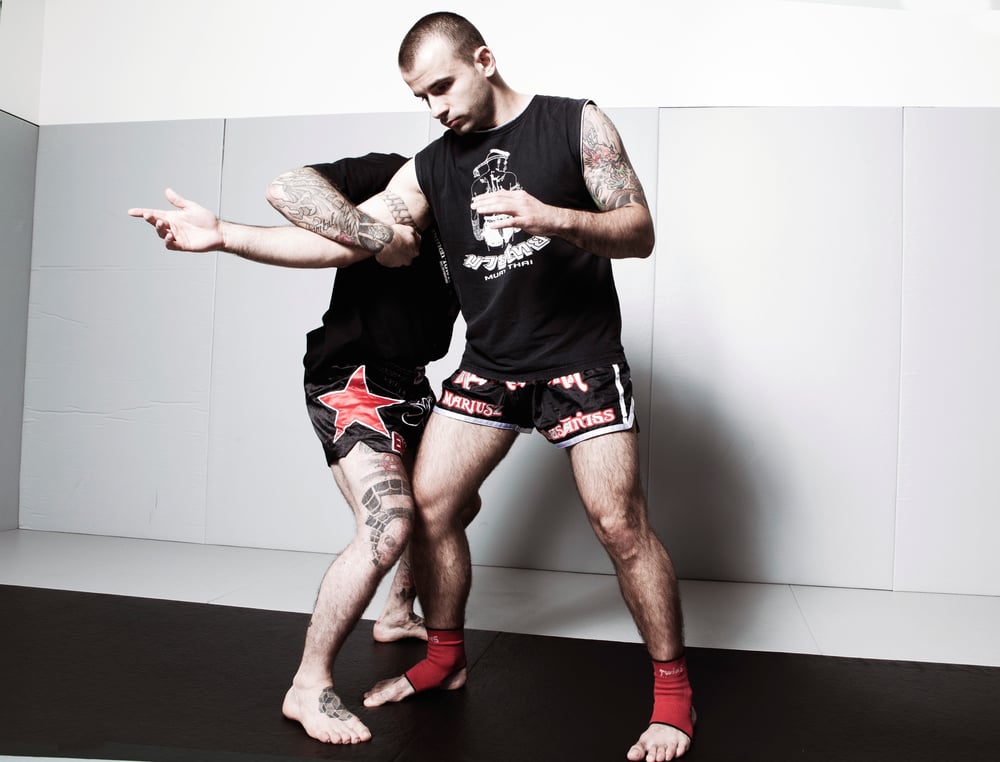
ARM DRAG, WINDSCREEN WIPER DRILL ORIGIN: WRESTLING
Player one posts a hand on player two’s same-side shoulder. Player one circles his arm, knocking the arm off his shoulder and continuing the circular motion – think ‘wax on, wax off’ from The Karate Kid. Grab the armpit with the opposite arm, and drag their leg between between your legs. Finish by stepping around the back and taking a bodylock or seatbelt on the waist. Repeat on the opposite side, then swap over.
SKILLS DEVELOPED
The basis for more practical but difficult set-ups and finishes
...









